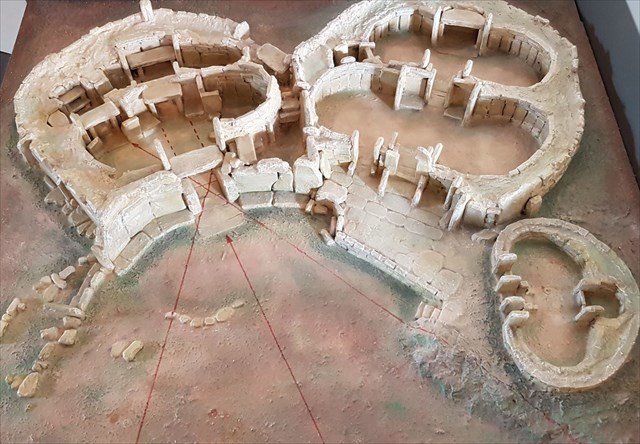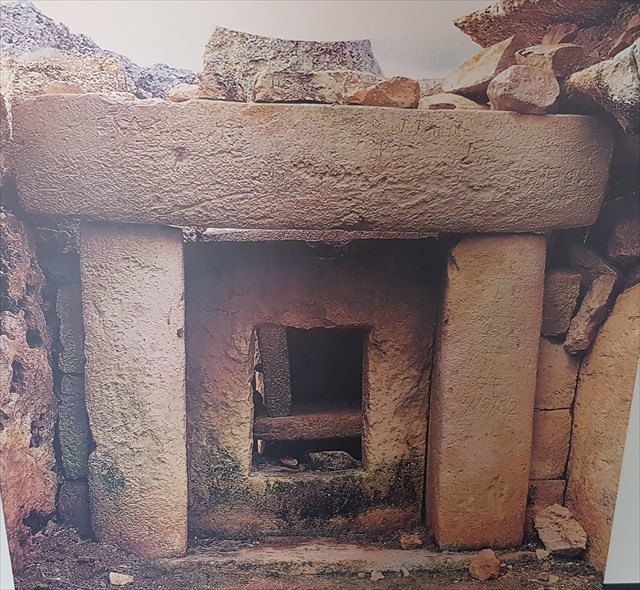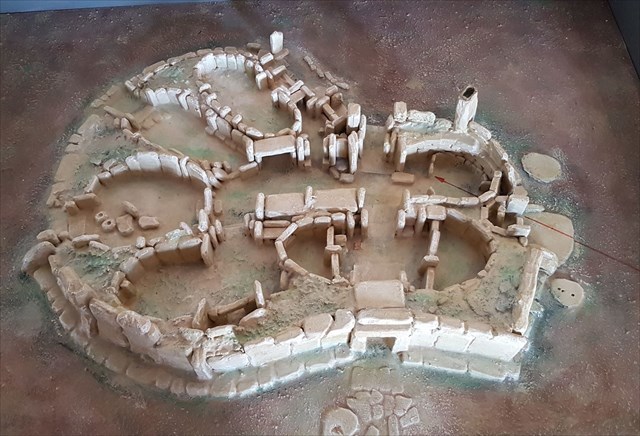Mnajdra and Ħaġar Qim
The temples of Ħaġar Qim and Mnajdra are UNESCO World Heritage Sites, inscribed as part of ‘The Megalithic Temples of Malta’ in the World Heritage List.
The neolithic inhabitants of the Maltese Islands had
no advanced technology
no metal tools
no writing
Yet they built the oldest free-standing stone buildings of such complexity in the world.
The temples of Mnajdra and Ħaġar Qim were first excavated in 1839/40.
The impressively large stone blocks (the highest of Ħaġar Qim is 5.20 meters high, the heaviest weighs nearly 20 tons) make it difficult to imagine that they were actually erected by humans, and so the temples at first were believed to have been built by giants.
A radiocarbon analysis in 1960 dated the oldest at 3600 BC.
Although much is unknown about the purpose of the temples, one function seems to be sure:
The calendar.
In prehistory the predicting of seasons was essential for the survival of agricultural societies.
The South Temple at Mnajdra is aligned in such a way that it marks the position of sunrise on the first day of each season; the Spring and Autumn Equinoxes and the Summer and Winter Solstices.

At Equinox, on the 21st March and the 23rd September, the rising sun shines directly through the main doorway along the central axis and illuminates the central apse
On the winter solstice, the 22nd December, the first rays of the sun hit the edge of a megalith to the right of the central axis
The same effect can be seen on the corresponding megalith on the left hand side of the central axis on the day of the summer solstice, the 22nd June.
Close by is a doorway, which is also illuminated on the day of the summer solstice. It is the motive of a very well known design today: the backside of the Maltese 1, 2 and 5 cent coins.

At Ħaġar Qim one of the chambers has an elliptical hole in the wall, known as the “oracle hole”.
It is hewn out in alignment with the Summer Solstice sunrise. On 22nd June the sunrays pass through this hole and project a disc of light on a stone slab inside the chamber. As the sun rises higher, the shape changes and the light travels around the chamber.


The sites are open for visitors almost every day of the year. For opening times please check the website of Heritage Malta. On the days of Equinox and the Solstices special events are offered where a limited amount of visitors can witness the sunrise in the temples (Early booking required)
To log the cache you have to go down to the temples of Mnajdra (the lower ones = Waypoint 2)
No entrance fee needs to be paid if you don’t want to, you can also peek through the fence. But we recommend of course not to miss the inside experience.
Take and send me a photo of yourself at the Mnajdra temples= Waypoint 2.
An upload later with your log would be nice.
And here is an optional extra task:
This is an object made from globigerina limestone which was found among many others during the excavations. It’s measurements are 5.4cm x 1.8cm x 2.5cm. It’s purpose is unknown. What do you think it was used for?
I’m looking forward to your creative answers :)

Virtual Reward - 2017/2018
This Virtual Cache is part of a limited release of Virtuals created between August 24, 2017 and August 24, 2018. Only 4,000 cache owners were given the opportunity to hide a Virtual Cache. Learn more about Virtual Rewards on the Geocaching Blog.